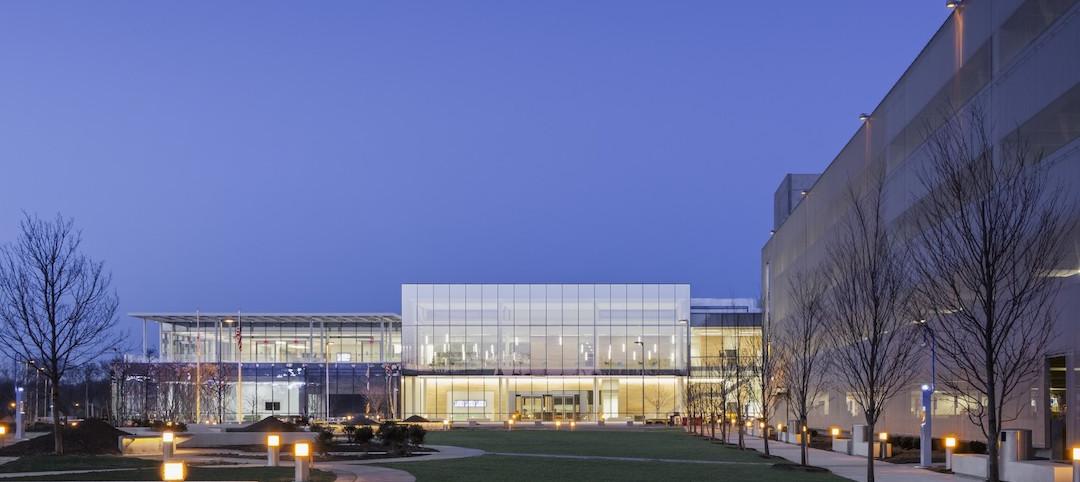In New Brunswick, N.J., a life sciences development that’s now underway aims to bring together academics and researchers to work, learn, and experiment under one roof.
HELIX Health + Life Science Exchange is an innovation district under development on a four-acre downtown site. At $731 million, HELIX, which will be built in three phases, represents New Jersey’s largest-ever investment in life sciences and medical education, according to a press statement.
SJP Properties, in collaboration with New Brunswick Development Corporation (DEVCO), recently unveiled plans for H-2—HELIX’s second phase. A mixed-use, 600,000-sf building, H2 will include build-to-suit lab and office space that can serve a range of uses for large corporate life sciences and technology company tenants. HDR is the lead architect for H-2, and JLL is the building’s leasing agent.
Next to Rutgers University and across from the city’s train station, the 574,000-sf H-1, the development’s first phase, will include the New Jersey Innovation HUB, the new home of Rutgers Robert Wood Johnson Medical School, and a Rutgers translational research facility equipped with a variety of labs to advance the work of 80 research teams and help improve individual and public health. H-1’s two-story ground floor will feature publicly accessible amenities and kiosks, such as a 10,000-sf market hall with food options and a 3,000-sf restaurant. H-1 is currently under construction.
H-3, the final phase of HELIX, is proposed as a 42-story mixed-use building with office space and 220 housing units.
HELIX tenants will have access to the New Brunswick train station. In line for a $49 million renovation, the station will provide access to both NJ TRANSIT, operating nearly 100 train stops in the city each day, and Amtrak.
HELIX also will be in proximity to the headquarters and regional offices of several major health, pharmaceutical, and life sciences companies, including those of Johnson & Johnson, Bristol Myers Squibb, and Ascendia Pharmaceuticals. In addition to next-door neighbor Rutgers University, HELIX will be within an hour’s drive to several colleges and universities, including Princeton University, University of Pennsylvania, and Columbia University.
Related Stories
Laboratories | Feb 3, 2022
New veterinarian building is Norway’s largest ever development in the university sector
The project is one of the largest and most complex ever undertaken in Norway.
Laboratories | Jan 28, 2022
3 must-know strategies for developers in today’s life sciences industry
While the life sciences industry had been steadily growing, this growth exploded when the pandemic arrived—and there is no indication that this lightning-fast pace will slow down any time soon.
Laboratories | Jan 17, 2022
A health crisis gives life to life sciences
Construction and renovation projects are heaviest in markets with consistent talent streams.
University Buildings | Jan 11, 2022
Designing for health sciences education: supporting student well-being
While student and faculty health and well-being should be a top priority in all spaces within educational facilities, this article will highlight some key considerations.
Giants 400 | Dec 31, 2021
2021 Science and Technology Sector Giants: Top architecture, engineering, and construction firms in the U.S. S+T facilities sector
HDR, CRB, Jacobs, Skanska USA, and Whiting-Turner Contracting Co. top the rankings of the nation's largest science and technology (S+T) sector architecture, engineering, and construction firms, as reported in the 2021 Giants 400 Report.
Laboratories | Nov 18, 2021
Tapping into the life sciences building boom
Paul Ferro of Form4 Architecture discusses how developers are pivoting to the life sciences sector, and what that means for construction and adaptive reuse.
2021 Building Team Awards | Nov 17, 2021
Caltech's new neuroscience building unites scientists, engineers to master the human brain
The Tianqiao and Chrissy Chen Institute for Neuroscience at the California Institute of Technology in Pasadena wins a Gold Award in BD+C's 2021 Building Team Awards.
Laboratories | Nov 17, 2021
New report finds a biopharma industry being reshaped by disruption
Industry respondents to CRB’s survey weigh in on project delivery, digitization, and off-site manufacturing for life sciences construction.
Laboratories | Oct 14, 2021
‘Next-generation’ Quest Diagnostics lab unveiled in New Jersey
Mark Cavagnero Associates designed the project.
Laboratories | Aug 31, 2021
Pandemic puts science and technology facilities at center stage
Expanding demand for labs and life science space is spurring new construction and improvements in existing buildings.

















